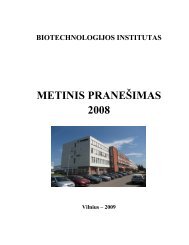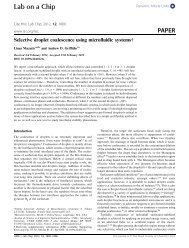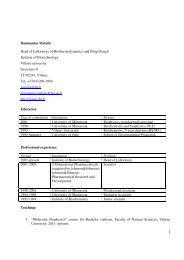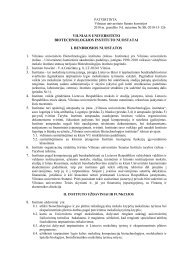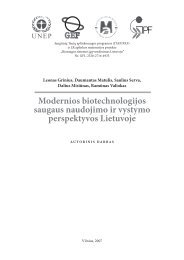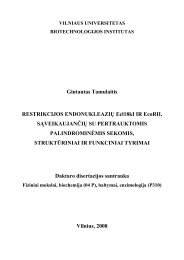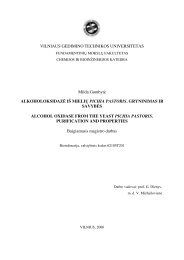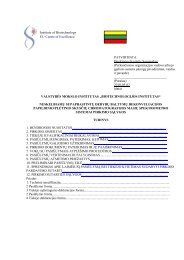Biennial Report 2011â2012
Biennial Report 2011â2012
Biennial Report 2011â2012
Create successful ePaper yourself
Turn your PDF publications into a flip-book with our unique Google optimized e-Paper software.
Department of Immunology and Cell Biology<br />
the strains. We did not find any correlation between VLY production<br />
level and G. vaginalis genotype/biotype. In contrast,<br />
a link between G. vaginalis genotype and sialidase production<br />
was established. Our findings on the diversity of VLY expression<br />
level in different clinical isolates and linking sialidase activity<br />
with the genotype of G. vaginalis could help to evaluate<br />
the pathogenic potential of different G. vaginalis strains.<br />
Figure 2. Detection of VLY production level in vivo. (a) Growth of six<br />
Gardnerella vaginalis isolates over time. (b) Quantitation by ELISA<br />
of VLY produced by six G. vaginalis clinical isolates at regular time<br />
intervals during growth. Error bars represent 95% CI of mean, n = 3.<br />
Reference: Pleckaityte et al., FEMS Immunol. Med. Microbiol.<br />
2012, 65(1):69-77.<br />
Regulation of hypoxia-inducible factor<br />
HIF-3α expression via the alternative<br />
pre-mRNA splicing mechanism.<br />
Recent genome-wide analyses of alternative splicing indicate<br />
that up to 70% of human genes may have alternative splice<br />
forms, suggesting that alternative splicing together with various<br />
posttranslational modifications plays a major role in the<br />
production of proteome complexity.<br />
Changes in splice-site selection have been observed in various<br />
types of cancer and may affect genes implicated in tumor progression<br />
and in susceptibility to cancer. This may lead to altered<br />
efficiency of splice-site recognition, resulting in overexpression<br />
or down-regulation of certain splice variants, a switch in splicesite<br />
usage, or failure to recognize splice sites correctly, resulting<br />
in cancer-specific splice forms. At least in some cases, changes<br />
in splicing have been shown to play a functionally significant<br />
role in tumorigenesis, either by inactivating tumor suppressors<br />
or by gain of function of proteins promoting tumor development.<br />
Thus, the identification of cancer specific splice forms<br />
provides a novel source for the discovery of diagnostic or prognostic<br />
biomarkers and tumor antigens suitable as targets for<br />
therapeutic intervention.<br />
Hypoxia has long been recognized as a common feature of solid<br />
tumours and a negative prognostic factor for response to treatment<br />
and survival of cancer patients. Biological responses to<br />
hypoxia involve induction of transcription of a network of target<br />
genes, a process which is coordinately regulated by hypoxia-inducible<br />
transcription factors (HIFs). three structurally related<br />
bHLH transcription factors (HIF-1, HIF-2 and HIF-3).<br />
HIFs recognize hypoxia response elements of targets genes as<br />
hetrodimeric complexes (HIF-1a, HIF-2a and HIF-3a) with<br />
the transcription factor Arnt.<br />
A splice variant of HIF-3, inhibitory PAS domain protein<br />
(IPAS), inhibits the dimerization of HIF-1 and ARNT. IPAS<br />
Figure 3. Spliced variants of HIF-3α<br />
pre-mRNA in mice.<br />
52



